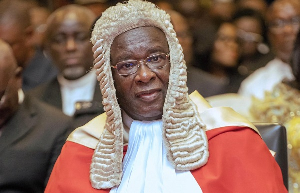Accra, May 6, GNA - Ghanaian scientists say radio frequency (RF) radiation emitted by antennae on telecom towers are not harmful to human health.
The scientists, drawn from the World Health Organisation (WHO), Ghana Atomic Energy Commission (GAEC), Environmental Protection Agency (EPA), and the National Communication Authority (NCA), told journalists at a day's workshop that public anxiety about the health hazards of RF radiation from telecom antennae was unfounded.
The workshop was organised by the Ghana Investment Fund for Electronic Communication (GIFEC), to educate the public through the media about the unfounded adverse effects of RF radiations, and the need for more telecom towers to improve coverage and quality of service. There has been huge public anxiety about the spread of telecom towers in residential areas due to fears that radiation from the antennae is cancerous.
Complaints lodged with the EPA showed that the public is concerned about health effects of radiation, public safety and noise from standby generators on telecom cell sites among other things.
As a result, the Ministry of Environment Science and Technology has placed a temporary ban on the erection of telecom towers, pending new guidelines that would compel telecom operators to co-locate and ultimately reduce the spread of masts.
But Dr. Vincent Ahove from the WHO said thousands of studies conducted by the WHO across the world have shown no link between human health and exposure to radio frequency radiation. He said the WHO had adopted the International Commission on Non-Ionizing Radiation Protection (ICNIRP) Guidelines for its operations in Ghana, adding that no telecom antennae or mobile phone in Ghana emitted radiation anywhere close to what ICNIRP allowed. "This means it does not matter whether people live close to or far away from telecom masts, because as far as exposure to RF radiations from telecom antennae are concerned, there is no proven link between emission and health effects," he said.
Mr Joseph Amoako, Head of Regulations at the Radiation Protection Institute (RPI) of the GAEC said emissions from telecom antennae were non-ionizing radiations, which did not have the capacity to destroy human DNA and therefore could not be hazardous to human health.
He said research showed that in Ghana, the levels of radio frequency emissions from telecom towers and mobile phones were thousands of times lower than what is internationally allowed to be emitted. Mr Amoako, however, cautioned that telecom towers should not be sited close to health facilities because the radiation waves could interfere with the operation of certain equipment.
Mr Ebenezer Ampah-Sampong from the EPA said there were, however, issues with the safety due to the structural integrity of the towers and also issues with community consent before towers were erected. He noted that due to competition on the telecom market, some operators went ahead of the EPA's and other permits to mount towers at certain locations without permits and that led to most of the complaints from the public.
Mr Henry Kanor, Deputy Director of Engineering at the NCA, said telecom operators needed towers to improve coverage and quality of service. He, therefore, called on the media to educate the public and disabuse their minds about the unfounded health hazards attached to RF radiation and the need for towers to improve quality of service. "We can't reject the towers and yet call for quality of service - quality service goes hand in hand with increase in the number of towers," he said.
Mr Kanor said the new draft guidelines for citing telecom towers would compel operators to do co-location in order to reduce public anxiety about the spread of the towers. At the close of 2009, there were 3,190 telecom towers across the country. Meanwhile, some of the operators are already doing co-location ahead of the guidelines. 06 May 10
General News of Thursday, 6 May 2010
Source: GNA












